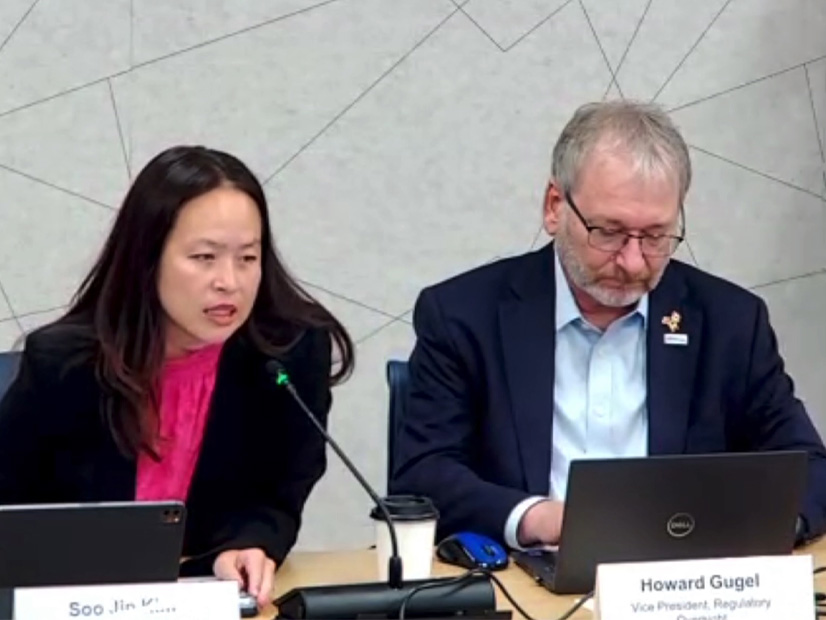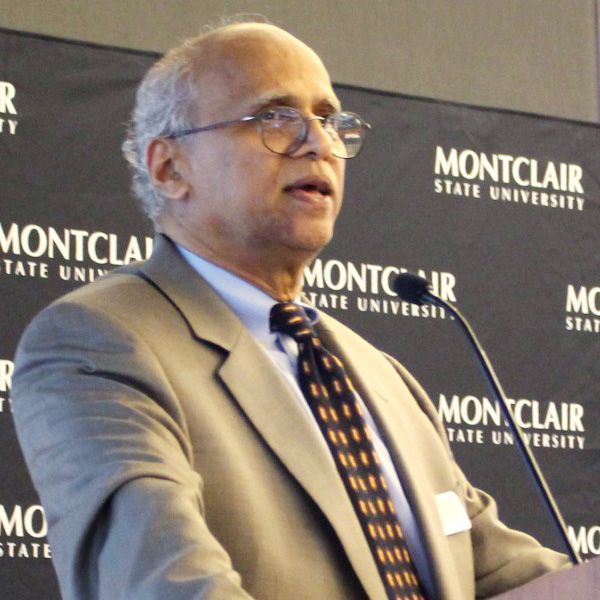The Bonneville Power Administration’s choice of a day-ahead market will not be driven by concerns about the impact of the seams that would divide the two markets proposed for the West, an agency official made clear May 8.
“Bonneville is very aware that having two markets in the same or neighboring footprints presents seams that need to be managed. We are taking that into account,” Russ Mantifel, BPA director of market initiatives, said during a virtual workshop with stakeholders. “But we think seams are manageable and that the existence of seams does not mean a categorical rejection of us joining Markets+.”
The workshop was the agency’s sixth such meeting on day-ahead markets and the first since agency staff issued its April 4 recommendation that BPA choose SPP’s Markets+ over CAISO’s Extended Day-Ahead Market (EDAM). (See BPA Staff Recommends Markets+ over EDAM.)
BPA’s position on seams puts it squarely at odds with EDAM’s most ardent supporters, who contend that a West divided into two markets would hamper the region’s ability to fully tap the “diversity benefit” of its energy resources and varying load patterns. For those stakeholders, a single Western market with no boundaries represents the key reason for advancing toward a more organized electricity market.
Included in that camp are the industry stakeholders and state energy officials backing the West-Wide Governance Pathways Initiative, an effort to create the governance framework for an independent market that expressly includes the state-run CAISO and builds on the ISO’s market platform.
“The seams issue is kind of a core question here,” Fred Heutte, a senior policy analyst at the Northwest Energy Coalition (NWEC), said during the workshop. NWEC has been a longtime advocate for a single Western market.
Heutte asked for BPA’s views on a February study by the Western Power Trading Forum (WPTF) and Portland, Ore.-based Public Generating Pool, which found that a seam between EDAM and Markets+ likely would create challenges beyond those seen at the boundaries of the full RTOs in the Eastern U.S., given that each market still would contain operating seams within them. (See Western Market Seams Issues to Differ from East, Study Finds.)
Heutte linked his question to a comment in the BPA staff recommendation in favor of Markets+ that referred to the “complexities” of BPA needing to accommodate transmission customers (including Northwest investor-owned utilities) and “preference” customers who are not participating in Markets+ — or, possibly, either market.
“This is a really unique situation,” Heutte said.
“I would say for Bonneville, it’s not that unique,” Mantifel responded, noting that BPA for eight years served customers participating in CAISO’s Western Energy Imbalance Market (WEIM) before joining that market in 2022.
“Just to be clear about this, I believe Bonneville has lived and resolved these seams more than any other entity in the West,” Mantifel said. “We have managed flows on our system for a market that we are not participating in, that we don’t control the redispatch of outside of the coordinated transmission agreements.”
“The seams are important. We hear the comments about seams. But Bonneville does feel that there’s a way to make this work. We would encourage, we would invite FERC, for example, to get involved and encourage the market operators to work together,” he said.
‘Profound Difference’
Heutte said there is a “profound difference” between how the real-time — and voluntary — WEIM functions and how transmission must be handled in a day-ahead market, which would require prior commitment of both resources and transmission.
Heutte encouraged workshop participants to read the SPP-MISO joint operating agreement to get a sense of the complexity of transacting across market seams, calling the document a “sobering read.” Given its role as the major transmission provider in the Northwest, BPA’s positions would be even more complicated if it joins Markets+ while many of its neighbors join EDAM, he said, because both markets effectively would be running on top of its balancing authority area.
“With all the complexities … [involved] with all the different potential positions of preference customers and transmission customers of Bonneville, this is a very, very complex thing to grapple with. I think it’s really important to understand this is not the same as just merely an extension of EIM,” Heutte said.
Mantifel said BPA understands that complexity “as well or better than anybody.” The agency has already put a lot of thinking into the issue as an open access transmission provider, he said.
“We understand the differences, and we do think that there are very feasible methods of reconciling all these things and operating,” he said. “We have done this, we think we can continue to do it, we think we can build on what we’ve done before and make it work.”
‘Multilateral’ Issue
Lea Fisher, representing the Western Public Agencies Group (WPAG), asked if BPA will address the implication of seams in the business case accompanying its final decision of day-ahead market, “beyond the discussion you’ve included in the staff leaning where you outlined kind of the need to work through seams and some of the history and successfully doing that.”
Mantifel said the Western Markets Exploratory Group (WMEG) studies prepared for BPA by Environmental+Energy Economics (E3) offer a picture of the economic benefits the agency would realize under multiple market footprints. (See Study Shows Uneven Benefits for Calif., Rest of West in Single Market.) E3 will provide “additional sensitivities” related to studies based on varying assumptions about transmission rates and “general market friction” at the seams, he said.
In terms of the “operational nature” of the seams, Mantifel said BPA is “eager” to have discussions with others in the region on the subject but hasn’t “been able to find partners” for such talks.
“But we will use the best information available, including our own experience, in terms of operationally what we think scenes would look like. That being said, seams are definitively multilateral. Bonneville can’t, on its own, make all the decisions or resolve all seams,” he said.
Asked what steps BPA has taken to find willing partners for the seams discussion and whether it has reached out to CAISO, the agency told RTO Insider in an email: “The West appears to be on … track for two day-ahead markets to operate concurrently. BPA is just saying the time to consider seams issues in that environment is now. BPA stands ready to work with entities in the regions to dig into the issue.”
The need to address seams was a topic of discussion at an April 30 meeting of the Markets+ Participants Executive Committee (MPEC). (See SPP’s Stakeholder Process Attracts Markets+ Participants.)
“It’s not a secret to anyone that the biggest scenario around objection to Markets+ is the seam,” said MPEC Chair Laura Trolese, with The Energy Authority. She said it would “behoove” the committee to start working on ways to reduce “transactional friction” as soon as possible rather than waiting until the end of the year.
Speaking at that meeting, Carrie Simpson, SPP’s director of seams and Western services, said RTO staff has heard “loud and clear that we want to figure this out.”
“I think there’s still just confusion on how it works if we do nothing, and so I think starting there can help people identify what friction exists and what friction does not exist,” Simpson said. “It’s a very important issue to address, and so I think we let that [stakeholder] process play out.”
But some stakeholders think that discussion would be premature before entities in the West decide which day-ahead market to choose.
“We can’t really tackle this until we know where the boundary is,” WPTF Executive Director Scott Miller said last month at the spring joint meeting of the Committee for Regional Electric Power Cooperation and Western Interconnection Regional Advisory Body (CREPC-WIRAB). “And so, when we get to that point, I think sometime this year, then we can engage meaningfully in what we can do to manage the seams that are unique to the day-ahead market.” (See Western Officials Get Rundown on ‘Irritating, Inefficient’ Market Seams.)
During the BPA workshop, Oregon state Rep. Mike Gamba asked what the advantage to the Northwest would be “in BPA being in a different market that outweighs the obvious difficulties resulting in creating an unnecessary seam.”
Mantifel said that notion assumes the two markets are equal.
“I would say that what we’re trying to articulate is that Markets+ is a superior option for us, and I think what we’re trying to move away from is the notion that these things are equal and that the only difference is one creates seams and another does not create seams,” he said.

